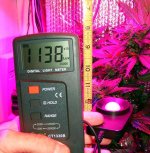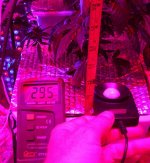Philosophelon
Member
...a good approximation for the law of intensity fall-off is to find the cross sectional wavefront area and divide the emitted power by that.
Thanks! But what the hell does the "cross-sectional wavefront area" mean?
Is that the total surface area of the surfaces below the reflector on which light is shining?
Just the canopy dimensions 'cause the walls are reflective?
If we are referring to the intensity drop off -- then that is "the inverse square law in an isotropic case".
Do you know what they meant by an "isotropic" case?
Sorry about the jargon questions, but like I said, I got a C in physics, and that was probably generous.









